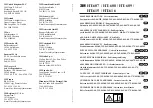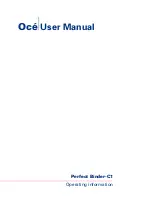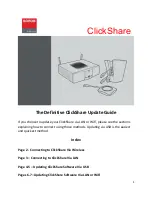
Operation manual for Ares(Tubular gel) series
- 18 -
Chapter
Three
Operation
and
Maintenance
1.
Setting
Up
The
Parameters
Below
is
the
table
for
data
set
up
on
Switch
power.
Discharge
times
and
DOD
vary
in
different
circumstance.
In
some
frequent
power
off
places,
batteries
are
discharged
a
lot
without
sufficient
charge,
so
we
need
to
raise
float
voltage
and
current
to
make
battery
full
charged
in
a
short
time.
Table
3
‐
1
Set
up
the
parameter
on
Switch
Power
(48V
system)
Parameter
Unit
Normal
Place
Frequent
Power
Off
place
Floating
Voltage
V
54
54
Equalization
Voltage
V
56.4
56.4
Current
A
0.1C
10
0.1C
10
Limited
current
for
charge
A
0.20C
10
0.20C
10
Equalization
Charge
Cycle
Day
90
30
Equalization
Charge
Time
h
24
24
Condition
to
change
Float
Charge
to
Equalization
Charge
(mA/Ah)
>50
>50
Condition
to
change
Equalization
Charge
to
Float
charge
mA/Ah
<5
<5
Voltage
under
load
V
45.6
45.6
Broke
Voltage
V
44
45
Recover
Voltage
V
49
50
High
Voltage
Warning
V
57.6
57.6
Low
Voltage
Warning
V
46
47
Temperature
Compensate
Ratio
With
Floating
Voltage
V/
℃
‐
0.072
‐
0.072
Temperature
Compensate
Ratio
With
Equalization
Voltage
V/
℃
‐
0.120
‐
0.120
High
Temperature
Warning
℃
35
35
z
The
above
data
are
set
at
an
ambient
temperature
of
25
℃
.
Please
refer
to
Table
3
‐
2
for
data
under
other
temperature.
z
Please
refer
to
above
data
especially
for
frequent
power
off
place.
2.
Capacity
Of
Battery
and
factors
to
affect
capacity
The
capacity
of
battery
is
the
capacity
that
battery
can
be
discharged
on
the
established
conditions,
expressed
as
signal
C.
The
usual
unit
of
capacity
is
ampere
hour,
shortened
as
AH.
For
example,
C
10
shows
the
battery
capacity
for
10
‐
hour
rate.
C
3
shows
the
battery
capacity
for
3
‐
hour
rate.
The
capacity
can
be
expressed
in
Rated
Capacity
or
Actual
Capacity.
Table
1
‐
1shows
the
Rated
Capacity
for
Ares
range
Battery.
The
Actual
Capacity
is
the
product
of
the
discharge
current
and
the
discharge
time,
the
unit
is
AH.
The
actual
capacity
is
affected
by
discharge
rate,
discharge









































